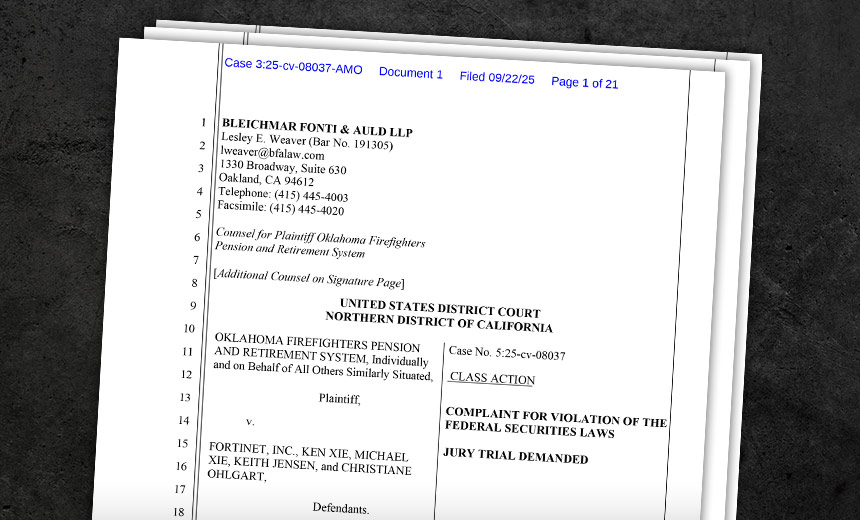Litigation,
Network Firewalls, Network Access Control,
Security Operations
Pension Funds Accuse Fortinet of Misleading Market with Optimistic Refresh Forecast

A pair of class action lawsuits have recently been filed against Fortinet, alleging violations of federal securities laws through misleading claims about a “record” firewall refresh cycle. Pension funds from both Oklahoma and Rhode Island argue that Fortinet misled investors by forecasting significant revenue from its refresh strategy, speculating it would generate over $400 million from approximately a quarter of its install base. However, they allege that the company was aware that this refresh predominantly involved older models, making up a small fraction of its overall business.
In November 2024, former Chief Financial Officer Keith Jensen assured investors of a substantial refresh cycle beginning in 2025, citing that a record number of devices would soon approach the end of their support life. His statement suggested a robust upgrade initiative was on the horizon, a narrative that ultimately contributed to a remarkable surge in Fortinet’s stock price. Yet, as disclosed later, the company had already executed a significant part of this refresh cycle earlier than communicated, which raised eyebrows among investors.
The lawsuits contend that by August 2025, it became clear that the anticipated revenue from the firewall refresh would not meet projections, prompting a drastic decline of over 22% in Fortinet’s stock price. Additional allegations of insider trading have emerged, with claims that executives sold substantial amounts of stock just days before the disappointing earnings announcement. CEO Ken Xie and CTO Michael Xie reportedly liquidated millions of dollars in stock while possessing non-public information that could adversely affect the stock’s value.
Central to the dispute is the assertion that Fortinet promoted the refresh of its FortiGate firewalls as a transformative opportunity, claiming it would take service upselling and cross-selling to historic levels. These statements prompted analysts to react positively, with the stock experiencing a sharp overnight increase. However, subsequent events revealed a misalignment between executive claims and market realities.
In early 2025, as Fortinet highlighted “early upgrade movement,” it characterized the refresh as “10 times larger” than previous cycles. But following the August earnings report, analysts began downgrading the company’s stock while questioning the viability of such broad claims. The lawsuits allege that executives understood that many customers were unlikely to upgrade, given sufficient existing capacity from previous purchases during the pandemic.
Furthermore, during the August earnings call, Fortinet executives disclosed that a considerable portion of the refresh included obsolete devices that would not considerably impact revenue. This revelation blindsided investors who anticipated a more robust contribution from the refresh well into 2026.
Asset sales by Fortinet executives have raised further concern, occurring suspiciously close to the earnings call. CEO Ken Xie and CTO Michael Xie conducted stock transactions just days before key market revelations, an act that the plaintiffs allege may qualify as securities fraud. These actions, they argue, superficially inflated Fortinet’s stock price and led to substantial financial losses when the true nature of the refresh cycle was unveiled.
In summary, the allegations against Fortinet paint a troubling picture of corporate governance and investor relations. The fallout from these lawsuits underscores the necessity for transparency, especially in the ever-evolving tech landscape where rapid advancements demand clear and accurate communication. As cybersecurity threats continue to rise, the implications of this case serve as a critical reminder of the importance of integrity and accountability within the sector.
